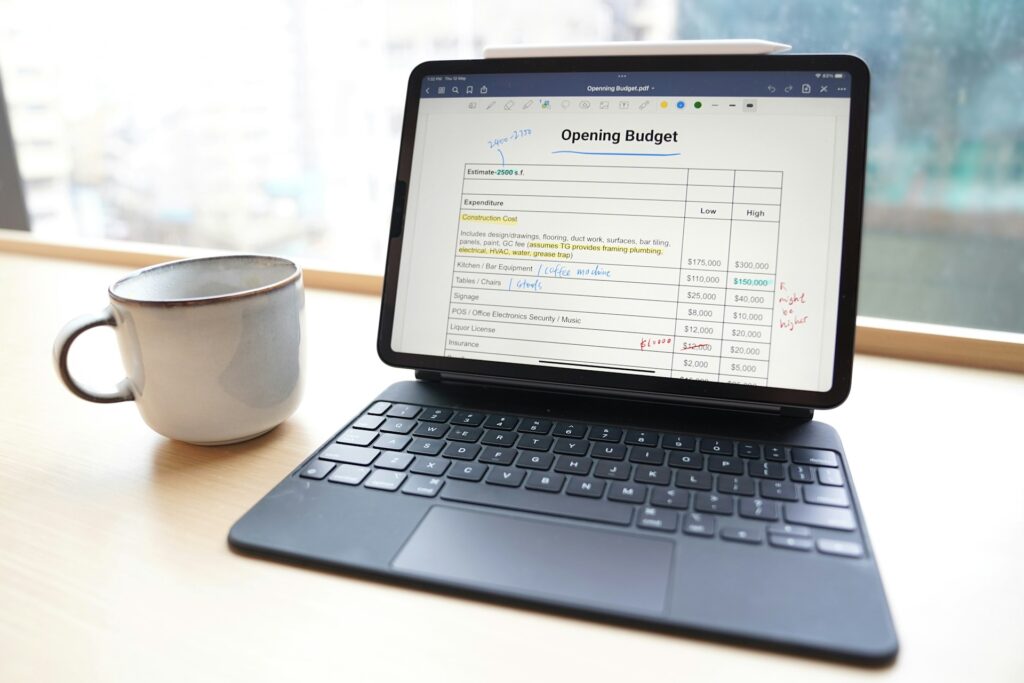How To Retire Early In 10 Simple Steps

So you’re tired of the 9-to-5 grind? Trust me, I get it. There’s something soul-crushing about spending your best years stuck in a cubicle, counting down the hours until Friday.
But here’s the thing: you don’t have to wait until you’re 65 to finally start living life on your terms. Learning how to retire early isn’t some fantasy reserved for tech billionaires or lottery winners. It’s actually doable for regular folks like you and me, and I’m going to show you exactly how.
Now, before you roll your eyes thinking this is another one of those “just stop buying lattes” articles, let me be clear. Early retirement takes real commitment, smart planning, and yeah, some sacrifices.
But imagine waking up every morning without an alarm clock, traveling whenever you want, or finally starting that business you’ve been dreaming about. Sounds pretty sweet, right?
Let’s break down everything you need to know about ditching your job years (or even decades) before your peers.
What Does Early Retirement Actually Mean?
Okay, let’s get on the same page here. When most people think of retirement, they picture someone in their mid-60s finally hanging up their work boots.
Traditional retirement usually happens between ages 60 and 65, when you can start collecting Social Security and tapping into those retirement accounts without penalties.
Early retirement? That’s when you say “peace out” to your job well before hitting that conventional retirement age. We’re talking about leaving the workforce at 30, 40, or 50.
Some people even manage to retire in their late 20s, though that’s pretty rare unless you’ve got some serious income or inheritance backing you up.
The exact age depends on where you’re starting from and how aggressively you want to pursue this goal. If you’re 25 right now, retiring at 45 would be early. If you’re 40, shooting for 55 still gives you a solid decade back.
How Much Money Do You Really Need To Retire Early?
Alright, let’s talk numbers because this is where things get real. The magic number that most financial experts throw around is about $1 million. Yeah, I know that sounds like a lot (because it is), but hear me out.
With a million bucks properly invested, you could potentially live off the returns without ever touching the principal. Using the famous “4% rule,” you’d be able to withdraw about $40,000 per year indefinitely.
That’s not going to fund a champagne lifestyle, but it’s definitely workable for many people, especially if you’ve paid off your house and don’t have kids at home anymore.
Here’s the thing though: your actual number might be different. It depends on your lifestyle, where you live, and what kind of retirement you’re envisioning.
Someone planning to travel the world constantly will need way more than someone who’s content gardening and reading books at home. A couple living in rural Tennessee has completely different financial needs than someone in San Francisco.
I always recommend calculating your expected annual expenses in retirement, then multiplying that by 25. That gives you a rough target based on the 4% withdrawal rule. So if you think you’ll need $50,000 per year, you’re looking at saving $1.25 million.
Why Would Anyone Want To Retire Early Anyway?
Okay, maybe this seems obvious, but let’s actually dig into why early retirement is such an amazing goal. It’s not just about being lazy or avoiding work (though let’s be honest, that’s a nice perk :)).
1. Your Health Will Thank You Big Time

Here’s something they don’t tell you when you’re signing that employment contract: work can literally kill you. I’m not being dramatic. Chronic stress from demanding jobs contributes to heart disease, high blood pressure, obesity, and a whole bunch of other health problems.
I’ve seen colleagues burn out in their 50s, developing serious health issues from decades of stress and long hours. Some people don’t even make it to retirement age because their bodies just give out. That’s tragic, and it’s preventable.
When you retire early, you’re giving your body a fighting chance. More sleep, less stress, time to exercise properly, and the mental space to actually take care of yourself. Your blood pressure drops, your cortisol levels normalize, and suddenly you’re not popping antacids like candy anymore.
Plus, let’s talk about mental health. The constant pressure, office politics, and feeling trapped in a job you hate takes a serious toll on your mental wellbeing. Early retirement means you can finally breathe again.
2. Travel While You Can Actually Enjoy It
Ever notice how most people’s big travel plans get pushed to “someday”? Well, someday arrives when you’re 67 with bad knees and zero energy for hiking Machu Picchu or exploring bustling markets in Bangkok.
Early retirement gives you the freedom to travel while you’re still young and healthy enough to truly enjoy it.
You can spend three months backpacking through Europe, volunteer in Costa Rica, or finally take that cross-country road trip you’ve been planning since college.
And here’s a bonus: traveling during off-peak times (which you can do when you’re not tied to a vacation schedule) is way cheaper. You avoid the crowds and save money. Win-win.
3. Finally Start That Dream Career or Business
This one’s huge for me personally. So many people feel stuck in careers they fell into rather than chose. Maybe you studied accounting because it was practical, but you’ve always wanted to be a photographer. Or you’re in corporate sales but dream of opening a bakery.
Early retirement doesn’t mean you stop working forever. It means you stop working for someone else doing something you hate.
Once you’ve got your financial foundation solid, you can pursue passion projects, start that business, or switch to a completely different field without worrying about the paycheck.
I know a guy who retired from banking at 48 and became a woodworker. He makes custom furniture now, works when he wants, and actually loves what he does. That’s the dream, right?
4. Pursue Your Real Passions
Related to the career thing, but worth its own section: early retirement lets you finally do all those things you’ve been putting off. Want to learn piano? Write a novel? Get really good at painting? Train for a marathon?
When you’re working full-time, you’re lucky if you have an hour or two in the evening for hobbies, and by then you’re usually too exhausted to do anything meaningful. Early retirement gives you the time and energy to become the person you’ve always wanted to be.
5. Actually Be Present For Your Family
This one hits hard for parents. How many school plays, soccer games, and family dinners have you missed because of work? How many times have your kids asked you to play, and you’ve been too tired or too busy?
Early retirement means you can be there for your family in ways that working parents simply can’t. You can pick your kids up from school every day, help with homework, coach their sports teams, or just hang out and talk. You can take care of aging parents without trying to juggle work responsibilities.
These years don’t come back. Once your kids are grown or your parents are gone, you can’t get that time back. Early retirement lets you prioritize relationships while you still can.
Your Step-By-Step Roadmap To Early Retirement

Alright, enough about the “why.” Let’s get into the actual “how.” These ten steps are your blueprint for making early retirement a reality, not just a pipe dream.
Step 1: Pick Your Target Retirement Age
You can’t hit a target you haven’t set. So right now, decide when you want to retire. Be specific. Not “someday” or “as soon as possible,” but an actual age.
This number is personal. For some people, 40 feels early. Others won’t feel satisfied unless they’re done by 35. There’s no wrong answer here, but you need to be realistic based on your current age and financial situation.
If you’re 30 and want to retire at 35, that’s only five years to save and invest aggressively. You’ll need a high income and extremely low expenses to pull that off. If you’re 30 and targeting 50, you’ve got 20 years, which is much more achievable for average earners.
Write down your target age somewhere you’ll see it regularly. Put it on your bathroom mirror, make it your phone wallpaper, whatever works. This becomes your North Star for every financial decision you make from here on out.
Step 2: Visualize Your Post-Retirement Life
Here’s where you get to daydream a bit. What does your ideal retirement actually look like? And I mean really think about it in detail.
Are you living in a paid-off house in the suburbs, or are you traveling full-time? Do you want a simple, frugal lifestyle focused on hobbies and family, or do you envision dining out regularly and taking international trips? Will you still do some part-time work you enjoy, or are you completely done with earning money?
This isn’t just a fun exercise. The lifestyle you envision directly impacts how much money you’ll need. Someone planning to live in a low-cost area and grow their own vegetables needs way less than someone who wants to maintain a luxury lifestyle.
Be honest with yourself here. If you know you’re not going to be happy living super frugally, don’t plan for that. It’s better to save more and retire a few years later than to retire early and be miserable because you can’t afford the life you want.
Step 3: Build Your Pre-Retirement Budget

Now we’re getting into the nitty-gritty. If you want to retire early, you need to master budgeting right now, not later. Your current budget is the foundation for everything else.
Start tracking every single dollar you spend for at least two months. Yeah, it’s tedious, but it’s eye-opening. Most people have no idea where their money actually goes until they track it. You’ll probably discover you’re spending way more on restaurants, subscriptions, or random Amazon purchases than you realized.
Once you know where your money goes, create a realistic budget that prioritizes saving and investing for retirement. A good rule of thumb is the 50/30/20 rule: 50% for needs, 30% for wants, and 20% for savings and debt payoff. But if you’re serious about early retirement, you might want to flip that to something like 50/20/30, putting 30% toward your future.
The key is finding a balance. Saving 70% of your income sounds great, but if you’re miserable and burn out after six months, you won’t stick with it. Better to save 30-40% consistently for years than to go extreme and give up.
Step 4: Create Your Post-Retirement Budget
This is different from your current budget. You need to estimate what your annual expenses will actually be in retirement. This takes some serious thought and research.
Start with the big stuff: housing, healthcare, food, transportation, and insurance. Then add in the lifestyle expenses you identified in Step 2. Don’t forget to account for inflation. A dollar today won’t be worth the same in 20 years.
Healthcare deserves special attention because it’s probably going to be your biggest expense, especially if you retire before you’re eligible for Medicare at 65. Research health insurance options in your state, look into Health Savings Accounts (HSAs), and factor in potential medical issues as you age.
Once you’ve got your estimated annual expenses, multiply that number by 25 (or 30 if you want to be more conservative). That’s your target retirement number using the 4% rule. So if you estimate needing $60,000 per year, you’re looking at saving $1.5 million.
Scary number? Maybe. But now you know what you’re working toward, and you can break it down into manageable monthly and yearly savings goals.
Step 5: Get Serious About Investing
Here’s the truth: you probably can’t save your way to early retirement through your salary alone, especially if you’re not making six figures. You need your money to work for you, and that means investing.
If you’re not already maxing out your 401(k) or IRA, start there. These tax-advantaged accounts are your best friends. The compound growth over time is what turns modest monthly contributions into serious wealth.
Beyond retirement accounts, consider opening a taxable brokerage account and investing in low-cost index funds. I’m a huge fan of index funds because they’re simple, diversified, and historically have delivered solid returns over the long term.
You don’t need to be a stock-picking genius; just consistently invest in broad market funds and let time do its thing.
Your asset allocation matters too. When you’re young and retirement is decades away, you can afford to be aggressive with a higher percentage in stocks.
As you get closer to your target retirement age, you’ll want to gradually shift toward more conservative investments like bonds to protect your gains.
And please, for the love of all that’s holy, don’t try to time the market or chase hot stock tips from your cousin’s friend. That’s gambling, not investing. Slow and steady wins this race.
Step 6: Build Multiple Income Streams

Want to know a secret? Most people who retire early don’t just rely on their day job savings. They’ve built passive income streams that continue generating money even when they’re not actively working.
Rental properties are a classic example. Buy a rental property (or several), and you’ve got monthly income rolling in. Yes, there’s work involved in being a landlord, but you can hire property managers to handle most of it.
Dividend-paying stocks are another option. Build a portfolio of solid dividend stocks, and you’ll receive regular payments just for owning them. Reinvest those dividends while you’re still working, and they become income in retirement.
Other passive income ideas include creating and selling digital products, writing a book, starting a blog or YouTube channel that generates ad revenue, or investing in peer-to-peer lending platforms. The key is starting these income streams now so they’re established and productive by the time you retire.
Even a few hundred dollars a month from passive sources can make a huge difference in your retirement budget and give you more flexibility with your withdrawal rate.
Step 7: Lock Down Quality Health Insurance
Let’s talk about the elephant in the room: healthcare. This is honestly one of the biggest obstacles to early retirement, especially in the United States where health insurance is tied to employment.
Once you quit your job, you lose that employer-sponsored health insurance. You’ll need to find coverage on your own, and it’s not cheap. Depending on your age and health, you could be looking at $500-1,500+ per month for a decent plan.
Research your options early. Look into marketplace plans under the Affordable Care Act, consider health sharing ministries (though these have pros and cons), or investigate whether your spouse’s employer offers coverage.
If you’re planning to retire before 65, you absolutely must factor health insurance costs into your retirement budget. Some people even time their retirement to coincide with Medicare eligibility just to avoid this issue.
Also, max out a Health Savings Account (HSA) if you’re eligible. HSAs are triple tax-advantaged and can be used for medical expenses in retirement. They’re basically a secret weapon for early retirees.
Step 8: Destroy Your Debt
You cannot retire early while drowning in debt. Period. Every dollar you’re paying toward credit cards, car loans, or student loans is a dollar that’s not working for your future.
Make debt elimination a top priority right now. Use either the debt snowball method (paying off smallest debts first for psychological wins) or the debt avalanche method (paying off highest interest debt first for mathematical efficiency). Either works; just pick one and stick with it.
Your mortgage deserves special consideration. Some people argue you should pay it off completely before retiring; others say keep the mortgage if the interest rate is low and invest the difference.
Personally, I lean toward paying it off. There’s something incredibly freeing about owning your home outright and not having that monthly payment hanging over your head.
Whatever you decide, just don’t add new debt. Stop financing cars, stop carrying credit card balances, and definitely don’t take out loans for vacations or other discretionary spending. That’s financial suicide if you’re trying to retire early.
Step 9: Review Your Investment Portfolio Regularly
Set a calendar reminder to review your investments at least twice a year. You need to make sure you’re on track to hit your goals and that your asset allocation still makes sense for your timeline.
As you get closer to your target retirement age, you’ll want to gradually shift from aggressive growth investments to more stable, income-producing assets. This protects you from a market crash right before you retire wiping out years of gains.
Rebalancing is also important. Over time, your portfolio will drift from your target allocation as some investments perform better than others. Selling some winners and buying more of the laggards keeps you properly diversified.
This is also a good time to assess whether you’re saving enough. If you’re falling short of your targets, you might need to increase your savings rate, push back your retirement age, or find ways to boost your income.
Consider working with a fee-only financial advisor for an annual checkup. They can provide objective feedback and catch issues you might miss. Just make sure they’re a fiduciary who’s legally required to act in your best interest, not a salesperson trying to earn commissions.
Step 10: Track Everything Like Your Life Depends On It
You can’t manage what you don’t measure. Tracking your progress is absolutely critical for staying motivated and making sure you’re on course.
Set up a simple spreadsheet or use a tool like Personal Capital to monitor your net worth monthly. Watching that number climb is incredibly motivating. You’ll see the compound effect of your savings and investments over time, which helps during those moments when you’re tempted to splurge.
Track your savings rate too. What percentage of your income are you actually saving each month? If it’s dropping, you need to figure out why and course-correct.
I also recommend tracking your progress toward your retirement number. If you need $1.5 million and you’ve saved $300,000, you’re 20% of the way there.
Celebrate these milestones! Hit 25%? Treat yourself to a nice dinner (within budget, of course). Reached 50%? Maybe take a weekend trip. These celebrations keep you motivated for the long haul.
Automate as much as possible. Set up automatic transfers to your investment accounts so you’re not relying on willpower to save each month. Pay yourself first, and you’ll be amazed how quickly your wealth grows.
The Real Talk About Early Retirement
Look, I’m not going to sugarcoat this. Learning how to retire early and actually doing it requires sacrifice. You’ll be making different choices than your peers. While they’re upgrading to luxury cars and buying bigger houses, you’ll be driving a paid-off Toyota and living below your means.
You’ll probably face judgment from people who don’t understand your goals. They’ll call you cheap or say you’re missing out on life. Let them talk. They’ll still be working at 65 while you’re sipping coffee on a Tuesday morning with nowhere to be.
The math is simple, but the execution is hard. It requires discipline, patience, and a willingness to delay gratification. Some months you’ll want to give up, especially when unexpected expenses pop up or you see friends taking expensive vacations.
But here’s what keeps me going: every dollar I save and invest today buys me freedom tomorrow. Every month I stick to my budget is one month closer to never having to set an alarm again. Every year I max out my retirement accounts is another year I can potentially shave off my working career.
Early retirement isn’t about being lazy or avoiding work. It’s about having the freedom to choose how you spend your time. It’s about not being forced to work for money and instead working because you want to, on projects you care about.
Final Thoughts
So there you have it: your complete guide to retiring early and reclaiming your life. Is it easy? Nope. Is it worth it? Absolutely.
The most important thing is to start now, wherever you are. Maybe you can’t save 50% of your income, but you can start with 10%. Maybe you can’t retire at 40, but 55 is still way better than 65. Progress beats perfection every single time.
Take action today. Calculate your retirement number, set up automatic transfers to your investment accounts, create a realistic budget, and commit to the process. Future you will be incredibly grateful.
Remember, time is your most valuable asset, and you can’t buy more of it. Every year you can retire early is a year you get back to live life on your terms. That’s priceless.
Now stop reading and start planning. Your early retirement isn’t going to fund itself! 🙂

